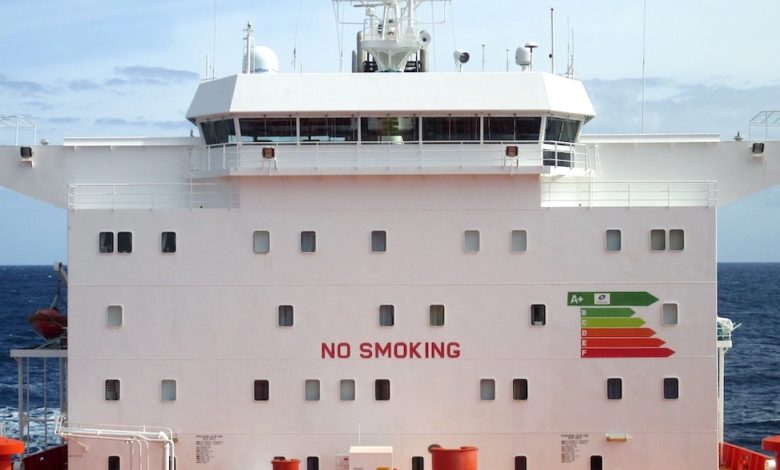The shipping community is digesting yesterday’s Splash exclusive news that the ‘A’ to ‘E’ operational efficiency rating of every ship above 5,000 gt will be made fully public and updated on an annual basis, possibly within a matter of months, potentially giving charterers similar energy ratings visibilities to what consumers see when buying home appliances.
Lasse Kristoffersen, CEO of Torvald Klaveness and a high profile member of the Getting to Zero Coalition, said he fully supported the measures.
“Transparency is key to any development, not least on carbon. I believe business is ahead of regulators on climate currently, hence we need to enable businesses to make informed and adequate choices,” Kristoffersen told Splash.
Why should it not be public? I see no other argument than protecting the laggards
Kristoffersen said that while currently there is no real consequences of breaching IMO green schemes, he was convinced that businesses will start to put in requirements as long as they get access to the data, something that had become more apparent with the recent establishment of the Sea Cargo Charter by many of the world’s top charterers.
“To turn it around – why should it not be public? I see no other argument than protecting the laggards and that will not take us anywhere,” the Norwegian shipowner said.
Martin Crawford-Brunt, CEO of RightShip, pointed out that it has been almost 10 years since his vetting firm supported the development of the GHG Emissions Rating which compares a ship’s theoretical CO2 emissions relative to peer vessels of a similar size and type using an A – G scale, similar to what consumers might see when buying a dishwasher. This rating system was even adopted and painted onto one Odfjell ship (pictured).
“It is rewarding to see the increasing amount of collaborative partnerships and proposals aimed at driving more transparency and greater accountability in order to decarbonise shipping and align with IMO emissions targets. We are starting to see this across the industry, such as major companies signing up to a common measurement and disclosure plan linked to long-term carbon emissions reductions in the launch of the Sea Cargo Charter,” the RightShip boss said, adding that sourcing reliable data to inform freight choices would continue to be key to RightShip’s future.
Crawford-Brunt’s predecessor at RightShip, Warwick Norman, hit out at why it had taken shipping so long to accept energy ratings.
“This information has been publicly available since 2012 … against much industry push back and complaints,” Norman wrote in a comment left on the Splash site, going on to question why the industry would want an A to E rating as opposed to the EU standard A to G as this would lead to more vessels falling into the lower categories and not being utilised, he argued.
Dan Rutherford, marine director at the Washington DC-based International Council on Clean Transportation, said the move towards transparency ought to be viewed positively, but details still need to be hashed out, and it would be important that the data provided improves upon what’s already available through voluntary systems.
“By our analysis, IMO’s technical standard will reduce CO2 from existing ships by about 1% below BAU in 2030. For the ranking system to matter, it needs to be both transparent and ambitious enough to require carbon intensity reductions well beyond what the EEXI is expected to deliver,” Rutherford said.
source: https://splash247.com/shipping-reacts-to-energy-rankings-news/


